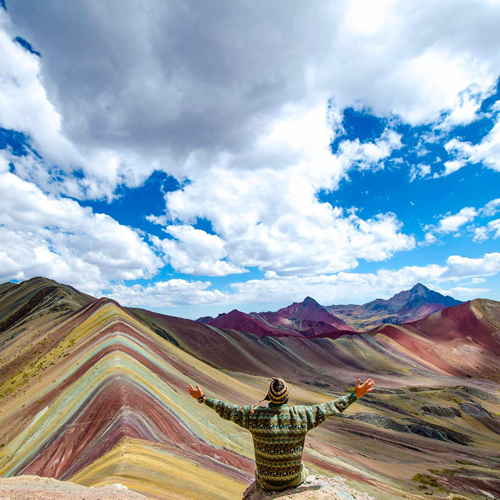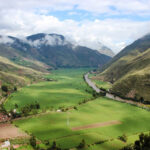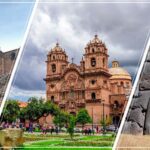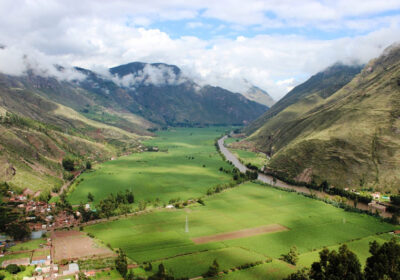
Maras Moray Journey Through The Sacred Valley
History of the Maras Salt Mines
The history of the salt mines of Maras is still a mystery. As with other Andean sites, there are Inca legends that tell of its origins. The most famous one has as its protagonists the four Ayar brothers, who were commissioned by their father, the god Viracocha, to go in search of fertile lands in order to found the great Inca empire.
Table Of Content
- History of the Maras Salt Mines
- Healthy Maras salt
- How is Maras Salt produced?
- How long has salt from the maras been traded?
- Where are Maras and Moray located?
- How do I get to Maras and Moray?
- Climate of Maras Moray, in Cusco
- What other places can I visit in Moray?
- The typical foods of Maras and Moray in the Sacred Valley of the Incas reflect the Andean region’s culinary tradition. These include
Legend has it that during one of their journeys, Ayar Cachi threw a stone at a mountain with such force that it created a canyon. When the three brothers saw this incredible scene, they decided to lock him up in a cave to prevent him from becoming the founder of the empire. Surprised and saddened by his brothers’ actions, Ayar Cachi wept so inconsolably that his tears formed a series of puddles that the sun later dried to form the salt flats.
Healthy Maras salt
One of the reasons why Maras salt is so popular, not only in Peru but all over the world, is its high quality and numerous health benefits. Due to its low sodium chloride content, it helps regulate blood pressure in hypertensive people. To do this, you have to take baths with a teaspoon of this salt per liter of water and soak for about 30 minutes. Afterwards, the body should be dried without using towels.
Another of its benefits is that it contains properties that help heal skin wounds, such as ulcers, varicose veins, herpes and psoriasis. Also, its consumption is recommended for people with arthritis and osteoarthritis for its anti-inflammatory properties: just dissolve a tablespoon in a liter of water and place the mixture in a damp cloth on the affected area.
How is Maras Salt produced?
The salt is obtained from the dissolution of underground rock salt deposits by water currents that carry minerals such as sulfates, calcium (anhydrite, gypsum), carbonates (calcite, siderite), salts (halite, sylvite) and oxides (hematite, limonite). These components give rise to white, reddish and yellowish salt, variations due to the presence of bituminous or organic substances, as well as calcium, magnesium and sulfate, and is characterized by its pleasant taste.
How long has salt from the maras been traded?
From pre-Inca times, through the Inca period to colonial times, salt has been a key element in the barter trade between communities in the jungle, the highlands, and possibly the central highlands. Today, it continues to be a fundamental product in commercial transactions between local residents and visitors to the area.
How many types of salt does Maras produce?
The salt producers create four different types of salt from each qocha or salt well.
1. Pakallo: the first layer, a white table salt intended for human consumption.
2. Takaya: also a table salt, collected as the second layer.
3. Allpa-cachi: the third layer, known as sowing salt, commonly used for livestock.
4. The thicker crystals that form on the banks of the qochas are used exclusively for livestock as the fourth type of salt.
The Arariwas apply Allpa-cachi salt to the fields one week after they irrigate the chacras, following a traditional method. The livestock exclusively use the thicker crystals of salt that form on the banks of the qochas.
Where are Maras and Moray located?
The archaeological site of Moray is located 7 kilometers from Maras, in the Sacred Valley of the Incas, 38 kilometers northwest of Cusco. You can reach Moray by driving from the village or by taking a detour from the main Cusco-Urubamba road.
How do I get to Maras and Moray?
Organized Tour:
The easiest way to visit Maras and Moray is on an organized tour. Many agencies in Cusco offer half-day or full-day excursions that include transportation, a guide, and often other stops at nearby sites such as the salt mines of Maras.
Public transportation and taxis:
You can take a bus from Cusco to Urubamba and get off at the Maras junction.
Climate of Maras Moray, in Cusco
Maras enjoys a cool temperate climate with temperatures ranging from 1°C to 21°C.
What other places can I visit in Moray?
South of Maras Ayllu is Checoq, which features residential structures, storage facilities, platforms, and corrals for camelids. These structures offer insight into domestic organization, social hierarchy, and productive activities.
Its construction incorporated materials from the original waka, including artwork by the indigenous artist Antonio Sinchi Roca.
The Tiobamba Sanctuary, also known as the Indian Chapel, is located two kilometers from Maras.
In Kachi Raqay, there are rectangular Inca enclosures near the river of the salt mines.
The typical foods of Maras and Moray in the Sacred Valley of the Incas reflect the Andean region’s culinary tradition. These include:
Pachamanca: A Tribute to the Land.
Chuño colado is a legacy of ancestral techniques.
Cuy al horno con sal de Maras is a fusion of millennial flavors.
Quinoa soup is a typical regional dish.
Kapchi de hongos: a typical dish of the area.
Chicharrón manca: a typical dish of the region.
Choclo con queso: a typical dish of the region.
Merienda mareña: a typical dish of the region.









No Comment! Be the first one.